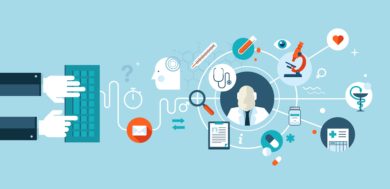We have all been adjusting to a new normal brought on by the COVID-19 pandemic. Every single one of us.
People, workforces, and communities all over the world have been practicing social distancing for months now, and many have been struggling to maintain their mental health. Some are experiencing higher anxiety, stress, and worry levels due to self-isolating and social distancing, not getting the services and support needed to maintain their physical and mental health, and uncertainty around returning to their workplace.
During the height of the pandemic, our homes have turned into a home office, a gym, a playground, a school, and anything else to keep our lives in orbit.
For some of our family members and friends, and perhaps even yourself, we have dealt with much more uncertainty due to financial worries, immunocompromised loved ones, and temporary or permanent job loss.
As a result of all these factors and uncertainty around COVID-19, it’s completely normal that many of us continue to experience a high level of uncertainty, worry, and stress.
You’re not alone. There are many others who also feel even more alone, isolated, and anxious, even as we start to transition back to normal.
What are the Mental Health Impacts of COVID-19?
To offer a glimpse into how COVID-19 has continued to impact people’s lives and their mental health, we have compiled data from thousands of individuals who access our online COVID-19 mental health program.
Based on our data, the story remains clear. There are three driving contributors to the anxiety and stress people are feeling, which include:
- High-levels of uncertainty (i.e., information overload, economic downturn, potential recession)
- Life-altering events (i.e., layoffs, finances)
- Major disruptions to work and personal life (i.e., childcare support, remote working)
When members were asked, “How much has COVID-19 affected your life?”:
- 79% say “A lot or Quite a lot”
- 18% say Somewhat
- 3% say A little or not at all
Results: As we head into the next phase of the pandemic, the impact of COVID-19 and workforce mental health will likely worsen. Workforces are worried about being exposed to the virus with the 2nd wave looming around them.
When asked how COVID-19 has affected their lives, members responded:
- 13.4% feel more irritable and anxious or tense
- 18.4% experience disruptions in their normal routines or life-altering changes
- 9.9% struggling with increased uncertainty
- 9.2% worry about the health of family, friends
- 45.3% say all of the above
- 0.9% say none of the above
Results: Nearly 50% are experiencing major life-altering changes, high levels of anxiety, and major disruptions in daily life. If left untreated or unmanaged, a person’s mental state can decline drastically leading to more physical and mental health problems.
“My life changed drastically, so quickly. I’d been temporarily laid off. It was really shocking for me and on top of that I have been struggling to adjust. – Starling Member
“I live by myself so it’s difficult for me during this isolation period. It’s just been very hard for me to accept this new lifestyle.” – Starling Member
When asked what factors contributed to their increased anxiety and worry, members responded:
- Facing isolation: 14.75%
- Aging parents’ health concerns: 12.8%
- Own health concerns: 11.3%
- Job status and/or workload: 10.75%
- Finances: 8.0%
- Children’s Health and Childcare: 3.58%
- All of the above: 38.75%
Results: Nearly 40% are experiencing anxiety and worry due to all aspects of their lives, but the top ones are social isolation, health concerns, and job security. Interestingly enough, facing social isolation is now the number 1 contributing factor, topping concerns of aging parents.
“My job has completely changed to crisis management. As a Human Resources Manager, I take the responsibility in ensuring our workforce is safe physically and mentally. My worries are escalated because if someone gets ill, I feel it is my responsibility to get them better and check in on them daily.” – Starling Member
“I do so much research to educate my workforce but sometimes I feel my updates aren’t taken seriously. I feel like it’s my fault and it’s really lonely and isolating.” – Starling Member
“I wake up in the middle of the night because of rehearsing my message and thinking of better ways of communicating it. It’s exhausting.” – Starling Member
When asked which of these worrisome thoughts resonates the most with you, members responded:
- How long will this go on for?: 50%
- What if my older parents get sick?: 19.66%
- Will I get sick?: 14.04%
- How will I support myself or my family without a job?: 6.18%
- Am I going to lose my job?: 5.62%
- How will this affect my kids’ education?: 3.37%
- Do I get enough information on COVID-19?: 1.13%
Results: As social distancing begins to lift, members have their most worrisome thoughts around how to safeguard their health to avoid affecting themselves, their families, and loved ones.
How to Manage Your Anxiety and Worry during COVID-19?
It may be surprising to many, but having temporary anxiety and stress can help us. It offers us the opportunity to build resilience and develop better problem-solving skills. However, long-term feelings of stress and anxiety can be harmful to you, especially if you do not have the tools and strategies to identify and regulate what you’re feeling or experiencing.
The best ways to manage your anxiety and worry during COVID-19 is to:
- Understand how uncertainty, changes, and disruptions to your life increases your stress and anxiety
- Set healthy boundaries to manage the constant stream of COVID-19 information
- Create realistic goals to keep your life on track during this pandemic
- Learn about strategies and tools to manage COVID-19 anxiety and worrisome thoughts
- Connect with a supportive, confidential online community for ongoing peer support
Without effective mental health resources in place, it will cost your organization your best employees. But, the silver lining is that we have the technology, data, and resources to prevent that from happening.
Related Article: COVID-19: Return to Work Roadmap for Employers
What have been the results of our COVID-19 program?
According to data capture within our program, over 73% of users found the program helpful in managing their stress and anxiety during the COVID-19 pandemic.
“I spent the day feeling like I’ve been on the verge of an anxiety attack. I spent about 25 minutes doing the breathing and visualization exercises, and I actually feel like I could fall asleep right now. This is a game changer. Honestly, reading the comments from Session 1 was really beneficial – just to know that I’m not alone in this. I was feeling kind of ashamed, like I’ve been overreacting, but I agree with so many of the comments shared. Oddly, that alone was helpful.” – Starling Member
In whatever way you might be coping, know that you are not alone. We’re in this fight together. And we won’t stop looking for ways to help you.
To go beyond COVID-19 and help employees build resilience to coming back to work, check out our Mental Fitness program.




